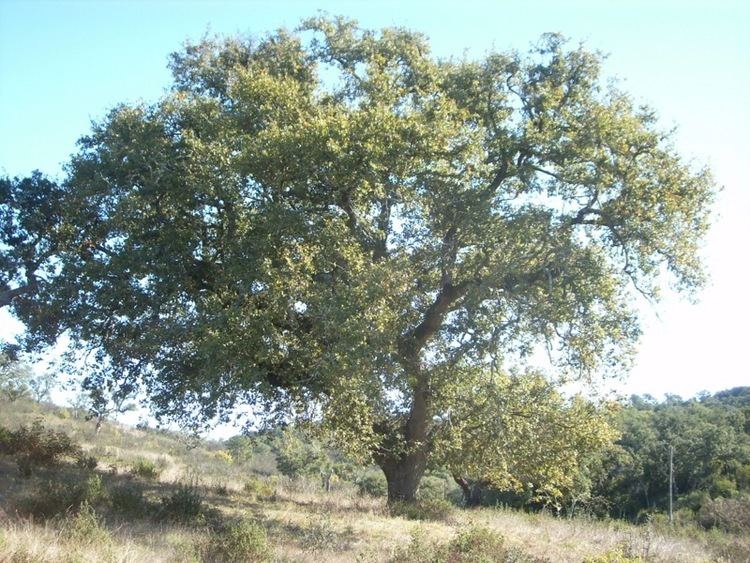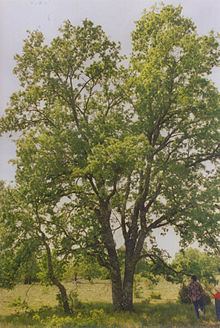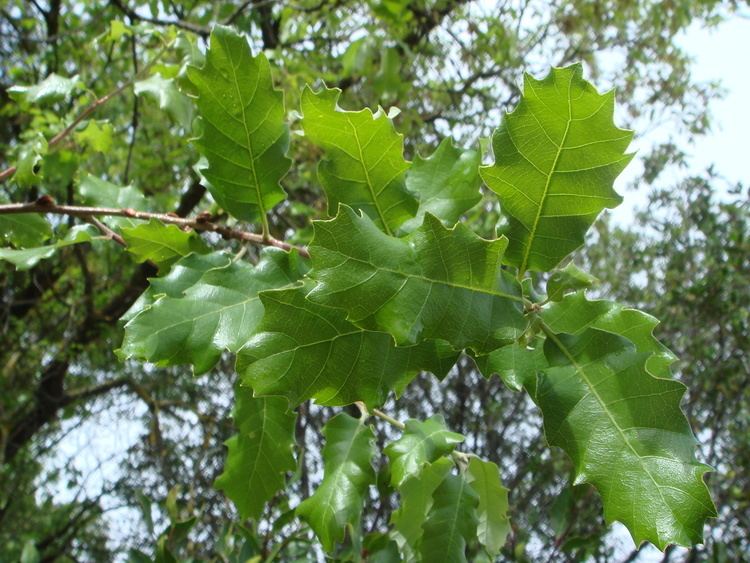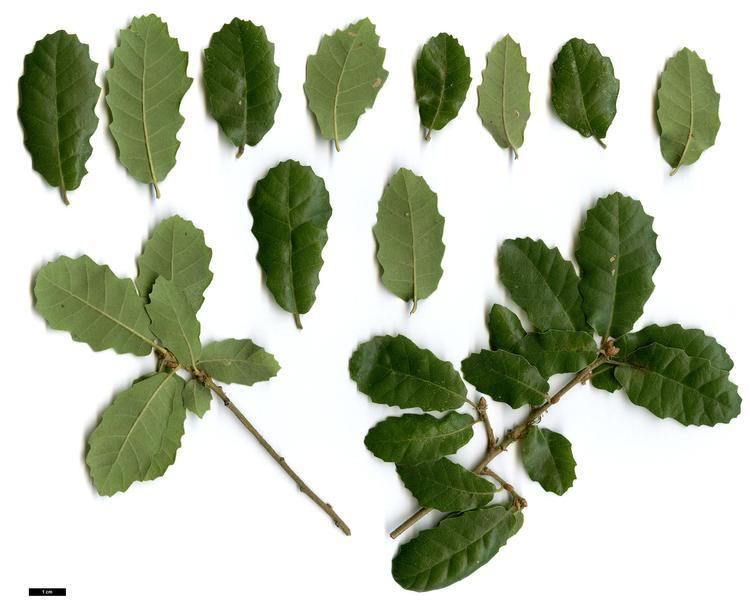Section Quercus Higher classification Oak | Genus Quercus Scientific name Quercus faginea Rank Species | |
 | ||
Similar Oak, Quercus ilex, Quercus pyrenaica, Quercus suber, Quercus coccifera | ||
Quercus faginea, the Portuguese oak, is a species of oak native to the western Mediterranean region in the Iberian Peninsula and the Balearic Islands. Similar trees in the Atlas Mountains of northwest Africa are usually included in this species, or sometimes treated as a distinct species Quercus tlemcenensis. It occurs in mountains between 0–1900 metres altitude, and flourishes in a variety of soils and climates.

Quercus faginea is a medium-sized deciduous or semi-evergreen tree growing to 20 meters tall, with a trunk up to 80 cm in diameter, with grey-brown bark. The tree can live as long as 600 years. The leaves are 4–10 cm long and 1.2–4 cm broad (rarely to 15 cm long and 5 cm broad), glossy dark green to grey-green above, and variably felted grey-white below; the margins have 5-12 pairs of irregular teeth. Leaf fall is typically in mid to late winter. The flowers are catkins, produced between March and April, almost always before Holm oak, which grows in similar areas. The acorns are oblong-ovoid, 2–2.5 cm long, maturing in 6 months to disperse in September or October.

The species commonly develops galls due to gall wasp activity; the galls are brown, 1–2 cm diameter, and have a spongy, cork-like interior.

There are two subspecies:

Portuguese oak also hybridises readily with other related oaks such as Algerian oak (Quercus canariensis) and downy oak (Quercus pubescens), which can make identification difficult.

The scientific name faginea refers to the superficial resemblance of the leaves to those of the beech (Fagus).
Uses
The wood has been used traditionally as firewood and as timber for construction (beams and posts). The acorns, like those of the cork oak, are an important food for free-range black Iberian pigs reared for jamón Ibérico production. It is also occasionally planted as an ornamental tree.
